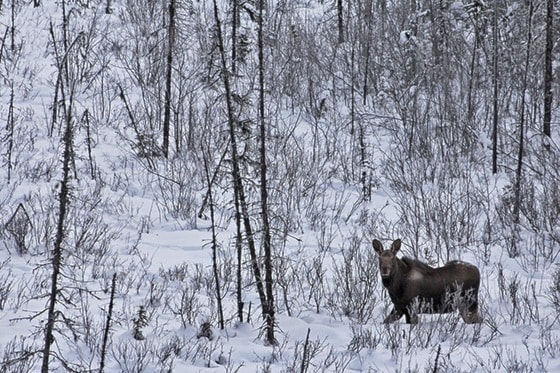This spring, the Ministry of Forests, Land and Natural Resource Operations expects to have a better understanding of why moose populations in northern B.C. are declining.
Moose densities in the southern Omineca region around Prince George have dropped by 50 per cent since 2005, but remain consistent with other populations in North America. In the Bulkley Valley Lakes District, the moose population has declined by 20 per cent since 2004, according to the ministry.
Reasons for the decline are still under review, but ministry biologists are looking at factors that may explain moose population dynamics in relation to land use activities.
A list of potential factors include unregulated hunting, increased access, predator populations, habitat changes from the mountain pine beetle epidemic and timber salvaging.
As a means to address the declines, the ministry has reduced the cow-moose Limited Entry Hunt in some areas by 90 per cent after consulting with the Guide Outfitters Association, the B.C. Wildlife Federation and regional First Nations.
This winter, The ministry resurveyed a subsample of areas in the southern Omineca region, part of a $100,000 investment in inventory initiatives made in May 2011.
Elsewhere in B.C., moose populations in the Skeena region have fallen by 70 per cent from 1997 to 2011.
Densities in the Cariboo have declined by as much as 60 per cent, the ministry estimates.
Favorable survey results were found in the Thompson-Okanagan and Kootenay regions, where moose populations are comparatively low to northern B.C.
